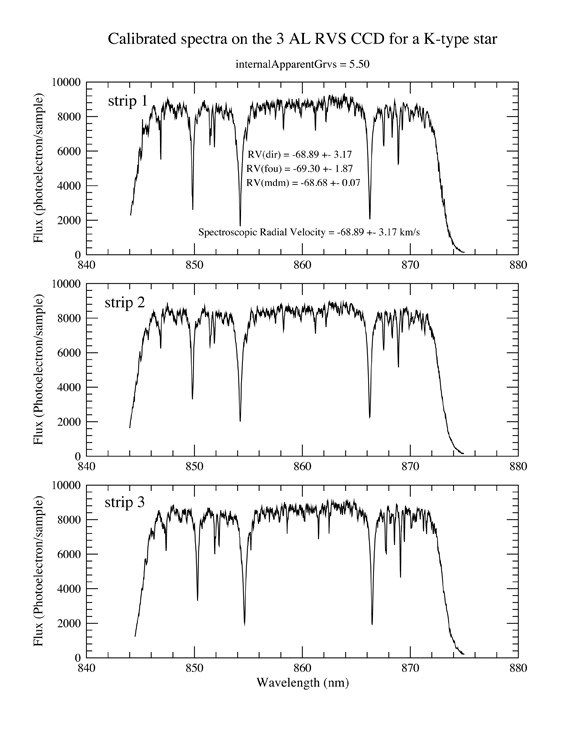
The figure, published today by ESA, illustrates one of the first results provided by the spectroscopic processing of Gaia-RVS data at CNES-DPCC. It shows the spectra calibrated in wavelength and flux on the three along scan CCDs for a single transit. The internal apparent Grvs magnitude, computed from the flux of the spectra, is about 5.5. The star is HIP 117279 and is a K5 giant.
A large number of lines can be seen in the spectra besides the three CaII lines. From these spectra, whose lines are shifted by the Doppler effect, the Single Transit Analysis software derives the radial velocity using three different methods.
The radial velocities obtained by each method are provided in the top figure and are consistent to each other. This indicates that the result obtained by the pipeline is good. The median of these three determinations gives the spectroscopic radial velocity associated to the star. The ground based radial velocity from the literature is in agreement with the pipeline results if the barycentric correction of the order of 19 km/s is applied.
The spectroscopic processing pipeline is developed by the DPAC CU6 group, in close collaboration with the CNES Gaia Data Processing Center teams. It will be run daily on Gaia data and is expected to produce tens of millions of spectra per day.
Credits: ESA/Gaia/DPAC/CNES/Yves Viala and Francoise Crifo
Page last updated: 06 October 2014
